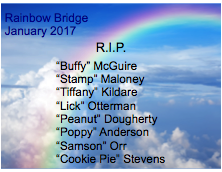Quiz: Is your practice the picture of health?
You don't have to look at a business's income statement to know if it's doing well. Signs of a happy, high-functioning veterinary hospital are apparent to clients, prospective employees and anyone else who takes the time to step back and see your business with fresh eyes. Take this short quiz to see if your practice is the picture of health.Clean and orderly environment
Clean and orderly environment
Sure, cleanliness reduces the risk of secondary infection in your patients, but it also represents a healthy state of mind for the people who work in the building. Circle through the building and seek out yellowed, weathered signage, dust bunnies, stacks of ancient magazines and piles of unfinished work.

Shutterstock.comAccording to the OfficeMax 2011 Workspace Organizational Survey, clutter and dirt negatively affect productivity (–77%), state of mind (–65% ), motivation (–53% ), happiness (–40%) and relationships with others (–20%). And you'll love this-it also impacts the waistline (–9%).
While you're circling the practice, take a look at what everyone is wearing. Engaged, happy people wear clean, neat clothing and are well-groomed.
How to score
- 1-5 occurrences of clutter and grime = 1
- 6-10 occurrences = 3
- 11-15 occurrences = 5
- 16 or more = 7
Client engagement

Customers come first, computers second--in other words, put down the mouse and pay attention to the cat. Photo courtesy of Bash Halow.Do you see veterinary professionals in your hospital making eye contact with clients and demonstrating that they're listening? Are the heads of your front desk team buried in “paperwork” or are they regularly bobbing up to engage happily with the eyes of your clients?
According to the Glassdoor 2013 Employee Engagement Report, employee engagement is most closely associated with feeling valued, so if sparks aren't popping between team members and clients, take a look at how you are relating and interacting with them.
How to score
- 1-2 occurrences of healthy client engagement = 7
- 3-4 occurrences = 5
- 5 or more = 3
Team member interaction

A large community table in a big room encourages employees across all pay grades to collect, mix and engage. Photo courtesy of Bash Halow. Teams should behave like-well-teams! During your circle of the practice, listen for chatter: that unmistakable ping-back of language that exists between groups of people closely coordinating their efforts.
You should hear phrases like “I got it for you,” “You need me?” and “What can I do?” from time to time. Tenured employees may be on a first-name basis with doctors, and all job classes should interact as relative equals, demonstrating that they appreciate their coworkers and value their efforts.
In a 2015 study of America's best-performing human hospitals, interdisciplinary interaction and respect were among the top characteristics of every hospital that made the cut.
How to score
- 0 occurrences of healthy team interaction = 7
- 1-4 occurrences = 5
- 5-9 occurrences = 3
- 10 or more = 1
Mission and meetings reminders
Posted signs listing core values, mission statements and positive reminders are all examples of a practice team engaged in a dialogue of who they are and what they are all about.

This practice loads a screen-saver slide show from its most recent meeting onto all hospital computers. Here you see the list of patients that passed away in the month of January. Photo courtesy of Bash Halow.Use large Post-it pads to record ideas in team meetings, with team members writing down the takeaway bullets. The act of writing stimulates retention and engagement. Afterward post the large Post-it sheets in common areas of the practice. Invite team members to photograph day-to-day incidences of the mission unfolding in the practice.
How to score
- 0 occurrences of positive, updated signage = 7
- 1-2 occurrences = 5
- 3-4 occurrences = 3
- 5 or more= 1
Materials created by employees
Does your surgery suite boast anesthetic guidelines or cheat sheets designed and built by your employees? Do you see any learning materials that were created by your veterinary teams? Engaged employees go out of their way to improve upon their workplace, often without being asked.
A 2017 report by the IBM Smarter Workforce Institute demonstrated that employees that went above and beyond to contribute additional helpful materials to their workplace felt a sense of belonging, purpose, achievement, happiness and vigor; all the ingredients for a perfect client and patient experience at your practice.

A true sign of employee engagement: Without being asked, an employee built a tool to help the business and other employees. Photo courtesy of Bash Halow. How to score
- 0 occurrences of employee-built resources and tools = 7
- 1-2 occurrences = 5
- 3-4 occurrences = 3
- 5 or more = 1
How did you do?
Tally up your points and refer to this scale for the verdict:
- 8-14 = You're the picture of health.
- 15-20 = You're healthy, but you need some touchup work.
- 21-25 = Better call a doctor.
- 26 or more: Here's the number for the undertaker.